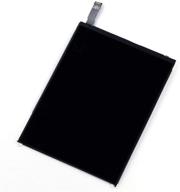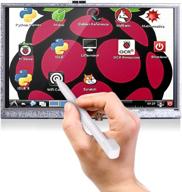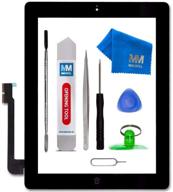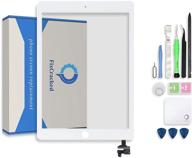
Review on 🔹 MakerFocus 6pcs I2C OLED Display Module 0.91 Inch Blue SSD1306 OLED Screen Driver 3.3V~5V for Arduino by Charles Adelaja

Only if you know what you're doing
Update 1: I'm about to find out why I'm still having problems with this device. After posting, I found that at least for the NodeMCU8266, contrary to my original assessment, pull-up resistors might not be needed. (In fact, the schematic diagram in the image listing shows that they are built in.) I have confirmed that the device can also work with the Arduino Uno, so as described it is both 3v3 and 5v compatible. However, Uno only works when the 4.7 kΩ resistor pulls the SCL line high. Strange. On the other hand, I can't get it to work reliably and I'm not sure if this display module is defective. It's time to pull out the logic analyzer and see what's going on. I'm temporarily changing my rating to 4 stars because a) it can work as expected and b) the supplier was extremely helpful in resolving the issue amicably. They are good, reliable people. (Also they stated that they asked their supplier to insert the headers but to no avail. It's not critical anyway.) *** I give 2.4 stars here. I received two devices - both work. 1) I understand the dissatisfaction with R. Arnold's review. However, the Adafruit library works in the sample code ( ssd1306_128x32_i2c ). However, good I2C knowledge is required. I learned it the hard way. There was an 8266 (3.3V) as the MCU plus an Adafruit temp/humidity sensor and this display on the I2C bus. I knew that I2C needed pull-up resistors on the SDA/SCL, but the sensor has pull-up resistors built in and theoretically you only need one set. The sensor communicated normally and I was able to detect both devices using the I2C scanner code in the Adafruit library examples. No sign of life from the display until I added 2 resistors of 3.3V to SDA and SCL - one each of course. Aha! (I used 4.7 kOhm - YMMV.) Don't understand why the display's I2C address was recognized on the bus, but nothing was displayed without additional resistors. However, including a rough diagram in the package will help speed up debugging, especially for those new to I2C. (By the way, the reset pin listed in the Adafruit library seems to be optional and can be changed in the source code from "4" to "LED_BUILTIN.", at least 8266.) 2) I don't think the text is very good readable without strong readers It's sharp but very very small 3) There are sound economic (seller) and expedient (buyer) reasons not to solder connectors, but would it be too expensive to throw in a pair of 4 pins? 4) No mounting holes!
- Lots of positive emotions
- Almost everything ok
New products
Comments (0)
Top products in 📱 Tablet LCD Displays

📱 Aukilus LCD Screen Replacement for iPad Mini 2 3 MINI3 Mini 2 Retina - A1599 A1600 A1601 Mini 2 Mini2 A1490 A1491 LCD Display 7.9" Tablet Repair Parts and Tools Included

6 Review

💙 0.91 Inch Blue I2C OLED Display Module for 5 Pieces, with DC 3.3V~5V I2C OLED Screen Driver

7 Review

Repair Parts Plus A1566 A1567

8 Review

🖥️ Longruner 5" Raspberry Pi Touch Screen - 800x480 TFT LCD Display for Model 3, 2, 1 B/B+, A/A+ (LSC5A)

8 Review
Another interesting products

Digitizer Repair Screen Replacement Adhesive Tablet Replacement Parts and Digitizers

10 Review

High-Quality MMOBIEL Digitizer Compatible with iPad 3 (Black) - 9.7 Inch Touchscreen Front Display Assembly with Tool Kit - Premium Choice for iPad 3 Repairs

9 Review

📱 Prokit Adhesive New White iPad 3 Digitizer Touch Screen Front Glass Assembly - Complete Kit with Home Button, Camera Holder, and Preinstalled Adhesive - Includes SlyPry Tools for Easy Installation

10 Review

🔧 Premium White Fixcracked Touch Screen Replacement Parts for iPad Mini 3 (A1599 A1600) - 7.9 inch 2014 Digitizer Glass Assembly + Professional Tool Kit

10 Review

